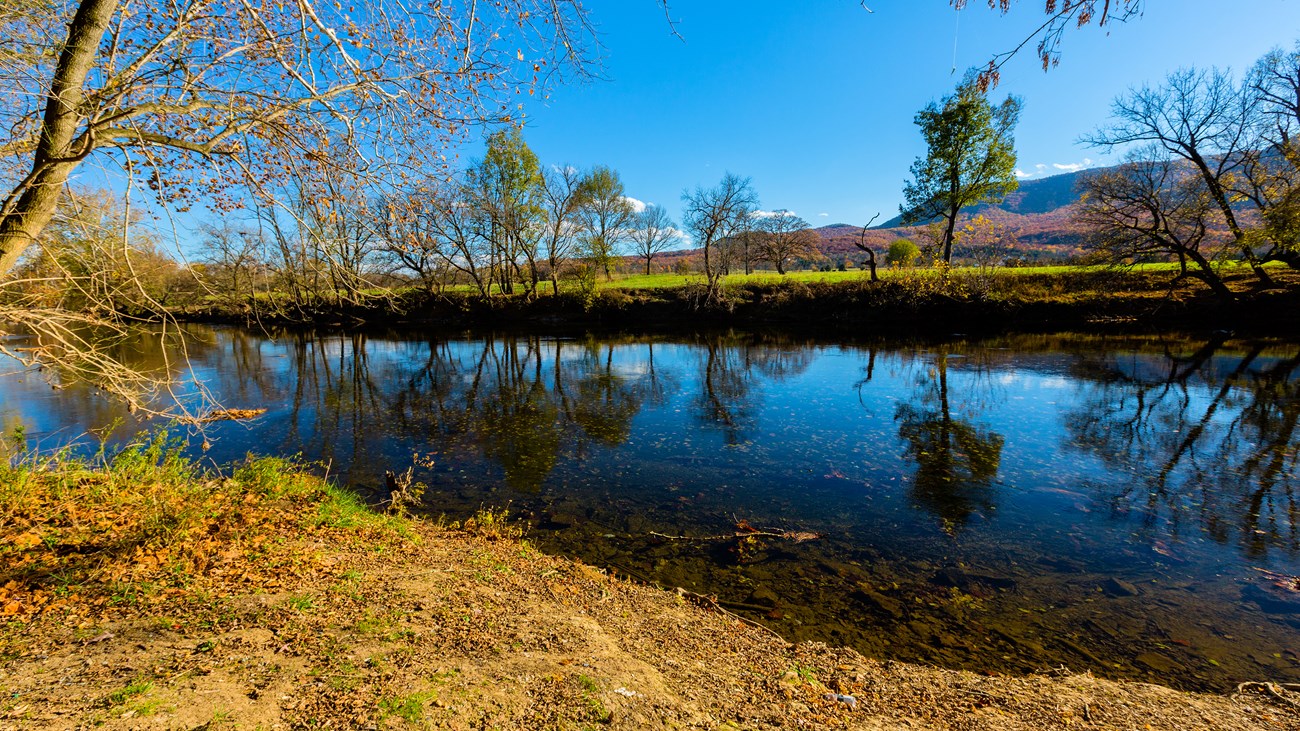Last updated: August 16, 2022
Article
Shenandoah River

NPS Photo by Ann & Rob Simpson
The entire Shenandoah River drainage system covers hundreds of square miles and includes many feeder streams, like Cedar Creek, that send water to the Shenandoah.
Watersheds
With its sources, or headwaters, high in the Blue Ridge and Alleghenies, the Shenandoah River consists of two major branches, the North Fork and the South Fork. Both forks generally flow northeast until merging just north of Front Royal, Virginia, to create the main stem of the Shenandoah. The river then continues northeast to empty into the Potomac River at Harpers Ferry, West Virginia. Since the Shenandoah River system flows downhill to the northeast, the northern end of the Valley is considered the “lower” Valley; the southern end, upriver, is called the “upper” Valley. All this freshwater eventually flows into the Chesapeake Bay and the Atlantic Ocean, part of a massive river system called the Chesapeake Bay Watershed. What this means is that nearly every drop of precipitation that falls on the Shenandoah Valley region, unless it evaporates first, ultimately travels downstream to the Atlantic Ocean to mix with saltwater.
Erosion & Deposition
Over millions of years, the Shenandoah River and its many tributaries carved out the Shenandoah Valley, picking up rock particles and other earth materials, then dropping them along the way to create wide, fertile floodplains. Because streams constantly change, the Shenandoah also developed snake-like, U-shaped, looping bends called meanders. Many of the meanders are in areas with underlying shale, a relatively soft sedimentary rock consisting primarily of hardened clay, silt, and mud.
While the processes of weathering and erosion have continually broken the hills and ridges down into particles of sediment, the Shenandoah River drainage system carried the particles downstream and deposited them throughout the Valley to create rich, fertile soils. Soils are complex mixtures of rock particles, mineral particles, water, air, and decaying organic matter, called humus, from plants and animals. The particle content of the soils in the Valley is primarily derived from sedimentary rocks like limestone, shale, siltstone, and sandstone. However, the reason the soil is so productive is because most of it is born from the fertilizer-like limestone and mixed with organic humus. These soils are deep, fertile, and well-drained, great for growing grains, hay, timber, apples, peaches, and grass for livestock. Because of the productive soil and more-than-adequate rainfall, agriculture is still the top industry in the Shenandoah Valley.
Precipitation
Driving the entire process of continuous geological surface change in the Shenandoah Valley area is precipitation, water from the atmosphere. Rainfall averages over 38 inches per year with 60 inches of total precipitation including rain, snow, sleet, and hail, while the highlands receive 55 inches of rain per year and about 100 inches of total precipitation. Thus, the highlands continue to erode lower, the rivers carry water and sediment downstream, the caves and caverns grow, and the soil produces crops. The cycle of life and replenishment in the Shenandoah Valley appears stable.
